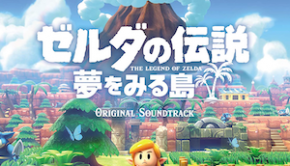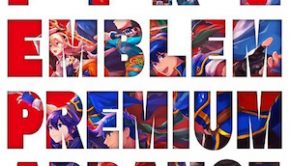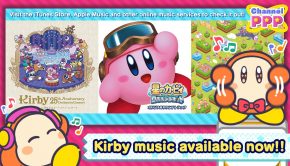Tomoya Tomita Interview: Sound Pioneer for Konami and Nintendo
Tomoya Tomita‘s résumé features one hit franchise after another: Contra, Castlevania, Metal Gear, beatmania, Kirby, Yoshi, and Goemon to name a few. However, the artist’s contributions to game sound development go much beyond this. From humble roots, he has pioneered technological and musical innovations in game audio for some three decades.
In this comprehensive interview, Tomoya Tomita recalls defining moments from his career: from his initial struggles work at Konami’s MSX room, to his years as sound director and sound manager at Konami’s Kobe branch, through to his musical renaissance with Kirby’s Epic Yarn and Wario Land: Shake It. He reveals all sorts of fascinating details about the development, music, and sound of the games he worked on. He also reflects on his eagerness to explore new opportunities following last week’s announcement that he has become a freelancer.
Interview Credits
Interview Subject: Tomoya Tomita
Interviewer: Chris Greening
Editor: Chris Greening
Coordination: Chris Greening
Interview Content
Chris: Tomoya Tomita, thank you so much for doing this interview. First of all, could you tell us about your musical background, education, and influences? What then led you to Konami?
Tomoya Tomita: I didn’t receive any music education to speak of. I had started playing the guitar at the age of 13 and the drums at the age of 16. I used to play in amateur bands too. My favourite artists among others were Earth, Wind & Fire, The Doobie Brothers, and the Electric Light Orchestra.
I found a classified ad for a sound creator position at Konami in a music magazine when I was 25. I applied for it and somehow got the position. Before then, I had been helping my family business for a while back, but had got sick of it (laughs). Since I didn’t have solid musical knowledge at all, I struggled a lot during my earlier years at Konami!
Chris: Despite this, you worn many hats over the years: sound director, sound designer, and music composer to name a few. Could you give us a run-down of your expertise? How have you developed such a wide range of skills?
Tomoya Tomita: Working at Konami was so much harder than I ever imagined, so I initially was working desperately just to survive there. Then one day I realised that I had become capable of handling everything including sound effects and compositions all by myself.
For example, I created all the music and sound effects all on my own for the SNES version of Animaniacs while staying in Chicago for three months. I think that being under such pressure has nurtured my skills (laughs).
Chris: To my knowledge, your first video game works came before that. They were at Konami’s MSX room on projects such as Metal Gear 2: Solid Snake, SD Snatcher, and Qarth. Please share your memories working on these collaborative projects. What was it like to use Konami’s famous sound chip, the SCC, on these projects?
Tomoya Tomita: Yes, these were the first projects I worked on during my first year at Konami. Although I was credited for these titles, I didn’t make much of a contribution and could not utilise SCC very well. A memory I would rather not reminisce, haha.
That said, the SCC cartridge was a unique product that could enrich the sound of MSX. With the SCC, it was possible to program waveforms resulting in richer tones compared to the PSG. It had four additional simultaneous voice channels so it was capable of recreating complicated harmonies.
However, the MSX had one fewer definable frequency by 1 bit than the NES. So it was not possible to recreate the musical intervals accurately or even recreate the scale Do, Re, Mi, Fa, Sol, La, Si (CDEFGAB). I had struggled with this a lot.
Chris: You also had the unenviable task of sound creation of the NES (Famicom) adaptations of Contra, Parodius, TMNT, and F-1, among others. What were the challenges of working with the NES hardware? How did you ensure the sound for these titles still stood tall against their MSX and arcade counterparts?
Tomoya Tomita: I ended up working on these titles as I transferred from the MSX team to the NES team. These titles are all cartridge versions. By that time, Konami had already stopped the development of games for the Disk System and so I never had experience with this system.
Regardless of whether they are adaptations of arcade games or original games, Konami’s sound team, including myself, were good at making the NES sound ostentatious. It is difficult to explain, but we devised really complex tricks.
Chris: Talking of challenging adaptations, you served as the sound producer for the Game Boy adaptations of the beatmania and Pop’n Music franchises. How did you manage to bring over song lists and rhythm gameplay from these titles to such a handheld? What technological innovations enabled you to make the audio sound so good?
Tomoya Tomita: Thanks to Pokemon, the Game Boy marked had suddenly resurged around this period. However, Konami had already lost the capacity to develop Game Boy games by then and everyone who used to be involved in their development had left the company.
So we had to design a brand-new sound program. We made sure to cut the CPU-load as much as possible without sacrificing functionalities.
Furthermore, we developed an interface in which it is possible to access all the functions of Game Boy as you input data, music and sound effects. This was developed so as to offer relatively inexperienced creators an opportunity to learn by trial-and-error. The actual coding was done by Mr. Yoshiki Domae. Even now I think this was an excellent work.
Chris: You dedicated much of your career to handling the sound of the Ganbare Goemon franchise. How did you develop a distinctive sound for the franchise and how did these sounds evolve with each instalment?
Tomoya Tomita: Yes, my work on the Goemon franchise has led me to my career at Good-Feel later on. The Goemon franchise sold well only in Japan. It was popular in Japan and the franchise had been continuing with a series of titles.
My notable memory regarding the Goemon franchise is from when I was working on the Nintendo 64 instalment (Mystical Ninja Starring Goemon). At that time I was very interested in PlayStation since we could create sounds and music for the CD format console. However, I was asked to work on Nintendo 64 titles and was not able to work with PlayStation hardware.
I then decided, so as to rival PlayStation titles, I’d create three songs with vocals in them. I knew this was technically possible for ROM-cartridge format games; there had even been a handful of SNES games that featured songs with vocals in them. However, what I really want to show that the cartridge format could compete well the CD format in terms of music and sound quality. I think this one shown in the video below went down pretty well.
Chris: Among your other major works are several instalments of the Castlevania series. Could you share your experiences as sound director of Castlevania 64 and Castlevania: Legacy of Darkness? What inspired you to adopt a relatively dark and atmospheric approach for their soundtracks?
Tomoya Tomita: While I was credited as sound director, the musical approach can be attributed to Mr. Masahiko Kimura who was in charge of compositions. I only provided technical support and sound effects.
Chris: You worked on many of these titles as the sound director of Konami Computer Entertainment Kobe. Could you tell us more about what this role involved on a day-to-day basis? Did you exclusively work with the sound team in Kobe or did you also sometimes interact with members of the Osaka and Tokyo branches?
Tomoya Tomita: In Kobe, I was in charge of their sound team. So I was assigned a dedicated assistant and ordered the team around while I sat on an expensive leather chair, haha. My role was that of a team manager, which involved the overall management of the schedule and so forth.
Chris: From 2005 to 2016, you reunited with Shigeharu Umezaki (KCEK CEO) to become the sound director of developer Good-Feel, leading to your work on various edutainment titles and Nintendo franchises. Could you tell us more about the history of this company? How did working there compare to Konami Computer Entertainment Kobe?
Tomoya Tomita: Led by Mr. Umezaki, Good-Feel was founded mainly by the staff of KCE Kobe. So the working environment and atmosphere there was just exactly like that of KCE Kobe.
During my last four years at Konami, I did not do any sound work. So I was thankful that I could start doing the sound work once again. Unlike at KCE Kobe, I handled all kinds of sound work on my own at Good-Feel. However, those ten years were the most enjoyable days in my career.
Chris: A lot of people really enjoyed your soundtrack for Wario Land: Shake It. How did you blend big band stylings with that distinctive Nintendo vibe? How did you ensure the instruments sounded so realistic and lively on this title?
Tomoya Tomita: Thank you for the compliment. Wario Land: Shake It! was my first compositional work in ten years so I was nervous as to whether I could make it through or not.
The tools used in the music production has changed drastically during those ten years. Hardware MIDI instruments had been replaced by VST plugins. I was initially puzzled but I got excited by the realistic sounds that VST plugins can re-create. For example, it has become possible to utilise the convolution reverb to re-create natural sounds and echoes of instruments. So I made good use of both VST plugins and convolution reverb.
By the “big band styling”, I guess you’re referring to the Wario’s theme tune which was adopted from the GameCube version. I re-recorded the brass section with realistic VST plugins and the guitar part was re-recorded with an actual instrument. I worked on the compositions and the arrangements with joy while being impressed by the ever-evolving technology day by day.
Chris: Most recently, you led the soundtracks for Kirby’s Epic Yarn. How did you create such fitting soundtracks for this title?
Tomoya Tomita: Thanks. If it were possible to achieve such things, I’d like to know!
Kirby’s Epic Yarn has become a very memorable work for me. The development of this game was begun initially featuring an original character named ‘Fluff’. Mr. Madoka Yamauchi, the planning section manager, explained that this will be a game which “small kids and their mothers would play together”.
So I thought I’d try to create sounds not traditionally considered video game music – not just cute music, but also those that were a little bit scary, a little bit sad, and so forth. In fact, the very first song I finished was the song used for the staff credits; although it didn’t cut the cut, I was planning to use this song for the first level of the game.
Since this game was originally not a title for an existing series, I was able to work on the sound design on my own authority. Mr. Madoka Yamauchi gave me good feedback throughout and this job was completely stress-free.
Chris: So what happened when the game became a Kirby one?
Tomoya Tomita: I initially had two ideas on how to capture the visual style of the games – one was to make the music centred around the acoustic guitar, the other was to centre it around the piano. In the end, however, I chose to make music using VST piano (plugins) which makes the recording and the modification easy. Since I am not good at playing the piano, I had studied different styles of piano playing and also practiced before I had begun to compose.
My work had been progressing well. However, towards the end of the development, the main character was replaced by Kirby and this ended up being a big surprised. After all, the songs I composed were not written for Kirby and all the final decisions on whether they worked for the series were up to HAL.
Neverthelss, thankfully, Mr. Tadashi Ikegami at HAL valued my work a lot. He was in a position in which he could say “no” to everything I’ve done. But, thankfully, he said “yes” to everything. I am very thankful to him.
Chris: Your latest titles are Yoshi’s Woolly World and its 3DS adaptation Poochy & Yoshi’s Woolly World. What can we expect from these productions?
Tomoya Tomita: For Yoshi’s Woolly World, I intended to make music centered around the acoustic guitar, which I had ended up avoiding for Kirby’s Epic Yarn. So before I had begun the production of songs, I took guitar lessons and learned how to play notes well enough for the recording, how to take care of my fingernails, and so on.
The production had been a repetitive process in which I’d compose songs with the piano and play them on the guitar afterwards. However, maintaining the adequate length of the fingernails required for playing the guitar made it difficult to play the piano, while clipping the fingernails made it difficult to play the guitar well. So it was a continuous dilemma (laughs). I remember I carefully manicured my fingernails throughout the game’s development!
Moreover, I am really thankful for Ms. Emi Watanabe at Nintendo. If it weren’t for the negotiations she had with various parties, I believe the sound of Yoshi’s Woolly World would have been completely different from what we’ve got now.
Chris: At the start of the year, you left Good-Feel to become a freelance artist. What inspired this move? What will you be offering as a freelancer and what clients would you like to work?
Tomoya Tomita: This move was triggered by Good-Feel’s decision to close their Kobe office. So it was not because there was a problem with our relationship (laughs). Although I am no longer a Good-Feel employee, my work with them has been continuing.
Given this new opportunity as a freelance artist, I’m thinking I’d like to work on something different. But there is nothing concrete yet at this point. I’d happily take video game-related work, and given a chance, I would like to try something different as well.
Chris: Many thanks for your time today. What can fans of your music look forward to in the future? Do you have any messages to readers around the world?
Tomoya Tomita: Thank you for reading this through! If there are any new announcements, I will let you know through Facebook, Twitter and so forth. And for all of you who like my music – thank you!
Posted on April 21, 2017 by Chris Greening. Last modified on April 21, 2017.




















hehe. It was interesting to hear how he tried to get the best of the SNES era with vocals!
Kirby’s Epic Yarn has a very daydreaming-like soundtrack. I sometimes listen to it to calm down.
This interview just got reposted as we finally received approval to include the bits about the Nintendo soundtracks!